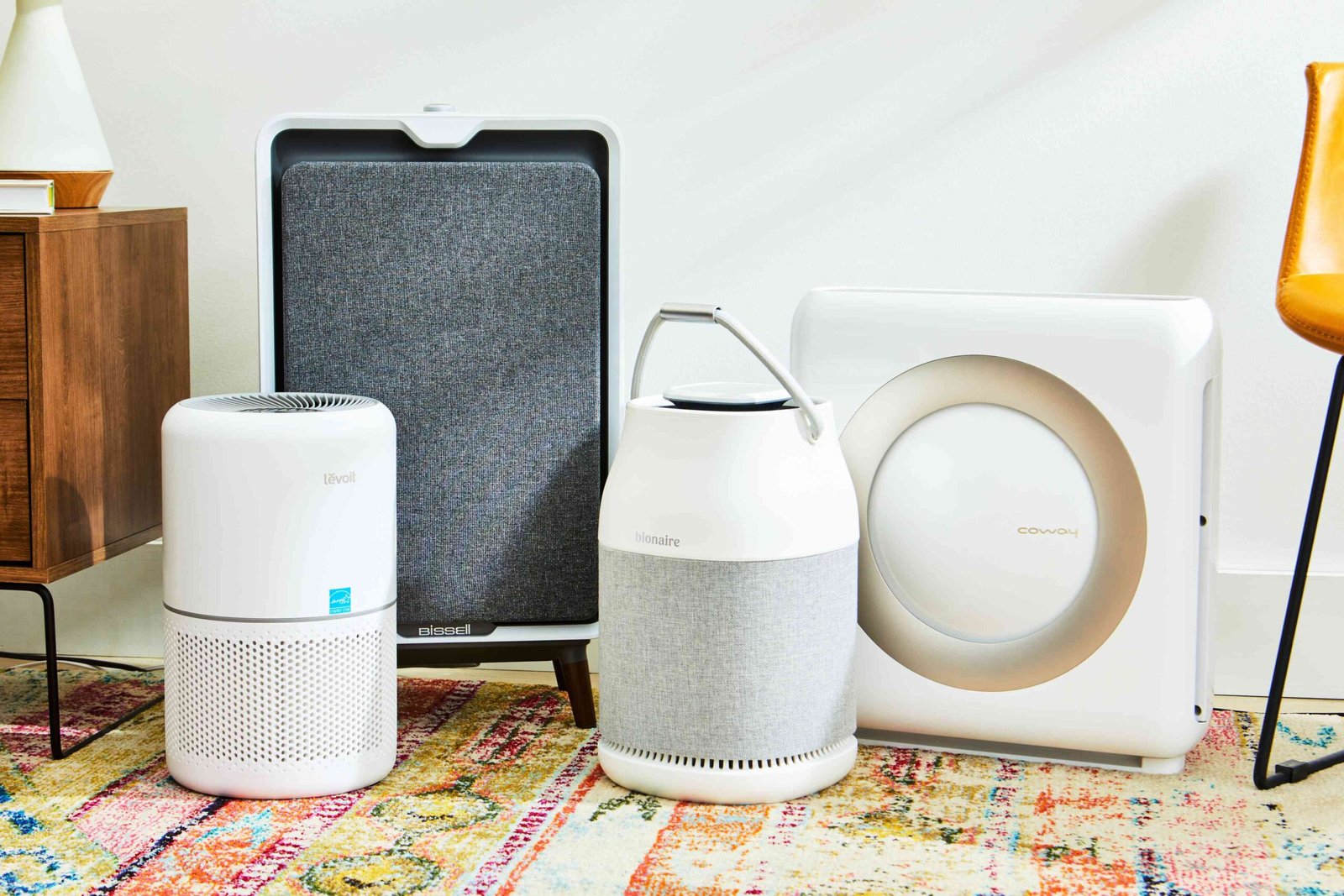The best air purifier features for asthma sufferers include HEPA filters and smart sensors. These features help in reducing asthma triggers effectively.
Asthma sufferers often struggle with airborne particles like dust, pollen, and pet dander. These tiny particles can trigger asthma symptoms, making it hard to breathe. Using an air purifier can significantly improve indoor air quality. But not all air purifiers are equally effective for asthma.
Knowing which features to look for can make a big difference. In this blog, we will explore the top features that an air purifier should have to help asthma sufferers. This guide aims to help you choose the best air purifier to breathe easier and live more comfortably.

Credit: www.aircaresolutions.co.uk
Hepa Filters
HEPA filters are essential for asthma sufferers. They capture small particles like dust, pollen, and pet dander. These particles can trigger asthma symptoms. Using an air purifier with a HEPA filter can help reduce these triggers. This makes the air cleaner and safer for those with asthma.
Efficiency Levels
HEPA filters have different efficiency levels. True HEPA filters capture at least 99.97% of particles that are 0.3 microns in size. This high efficiency makes them ideal for asthma sufferers. Some air purifiers come with HEPA-type filters. These are less efficient but still effective for larger particles. Choose a purifier with a true HEPA filter for the best results.
| Filter Type | Efficiency |
|---|---|
| True HEPA | 99.97% of particles 0.3 microns |
| HEPA-type | Less efficient, captures larger particles |
Maintenance Tips
Proper maintenance is key for HEPA filters. Follow these tips to keep your air purifier working well:
- Replace filters every 6 to 12 months.
- Check the filter indicator light regularly.
- Clean the pre-filter monthly if your unit has one.
- Vacuum the exterior of the air purifier to remove dust.
Maintaining your HEPA filter ensures it works efficiently. This helps keep the air clean for asthma sufferers.
Activated Carbon Filters
Activated carbon filters are essential for asthma sufferers. These filters trap pollutants and allergens. They improve indoor air quality significantly. Activated carbon filters work by using a large surface area to capture particles. They are especially effective for reducing odors and chemicals in the air.
Odor Removal
Odors can trigger asthma symptoms. Activated carbon filters excel at removing odors. They trap particles that cause unpleasant smells. This includes smoke, pet odors, and cooking fumes. Clean air reduces the likelihood of asthma attacks. You can breathe easier and feel more comfortable at home.
Chemical Absorption
Many household items emit harmful chemicals. Paint, cleaning products, and furniture can release volatile organic compounds (VOCs). These chemicals can irritate the airways. Activated carbon filters absorb these chemicals. They prevent them from circulating in your home. This creates a safer environment for asthma sufferers.
Uv Light Technology
UV Light Technology in air purifiers offers significant benefits for asthma sufferers. This technology uses ultraviolet (UV) light to kill or neutralize harmful microorganisms. These microorganisms include bacteria, viruses, and mold spores. Using UV light can help create a cleaner, healthier environment.
Germicidal Properties
The germicidal properties of UV light are well-documented. UV-C light, in particular, is effective at destroying DNA in microorganisms. This process prevents them from reproducing. An air purifier with UV-C light can significantly reduce airborne pathogens. This makes the air safer to breathe for those with asthma.
Safety Considerations
While UV light is effective, safety is crucial. Direct exposure to UV-C light can harm human skin and eyes. Ensure the air purifier design contains the UV light safely inside the unit. This prevents any direct exposure. Always check for certifications that guarantee safety standards are met. These include UL or ETL listings.
Smart Sensors
Smart sensors in air purifiers are a game-changer for asthma sufferers. These sensors monitor indoor air quality and adjust the purifier’s settings automatically. This ensures the air remains clean with minimal effort from the user.
Air Quality Monitoring
Modern air purifiers come with air quality monitoring features. These sensors detect pollutants like dust, pollen, and smoke. They provide real-time feedback on the air quality in your home. This helps asthma sufferers stay informed and take action when needed.
Some advanced models display air quality levels using colored lights or digital screens. For instance:
| Color | Air Quality |
|---|---|
| Green | Good |
| Yellow | Moderate |
| Red | Poor |
Automatic Adjustments
Air purifiers with smart sensors can make automatic adjustments. These purifiers change their settings based on the air quality. For example, they increase fan speed when they detect high levels of pollutants. This ensures optimal air quality without constant manual changes.
Here are some benefits of automatic adjustments:
- Consistent air quality
- Energy efficiency
- Convenience for users
Asthma sufferers can breathe easier, knowing their air purifier works efficiently.
Quiet Operation
Asthma sufferers often need a quiet environment to breathe easily. This is why quiet operation is a key feature in air purifiers. A noisy air purifier can disturb sleep and cause stress. The best air purifiers for asthma sufferers are those that operate quietly, ensuring a peaceful atmosphere.
Decibel Levels
The noise level of an air purifier is measured in decibels (dB). Lower decibel levels mean quieter operation. Here is a simple table to understand the noise levels:
| Decibel Level | Noise Description |
|---|---|
| 0-20 dB | Almost Silent |
| 20-40 dB | Quiet |
| 40-60 dB | Moderate |
| 60+ dB | Loud |
For a peaceful environment, choose air purifiers with a noise level below 40 dB. This range is considered quiet and won’t disturb your daily activities or sleep.
Night Mode Features
Many air purifiers come with a night mode feature. This feature reduces noise and dims the lights on the device. It creates a calm and dark environment for sleep. Here are some common night mode features:
- Reduced Fan Speed: Lowers the noise level for a peaceful night.
- Dimmed or Turned-Off Lights: Prevents light from disturbing sleep.
- Automatic Timer: Allows the purifier to run quietly during sleep hours.
Night mode is especially important for asthma sufferers. It ensures that the air purifier works efficiently without causing any disturbance. Look for air purifiers with an effective night mode to enhance your sleep quality.

Credit: www.amazon.com
Energy Efficiency
Energy efficiency is crucial for asthma sufferers using air purifiers. Efficient air purifiers reduce energy consumption, save money, and help the environment. Choosing an energy-efficient model ensures that the air purifier works effectively without raising electricity bills.
Energy Star Ratings
Energy Star ratings indicate how efficiently an air purifier uses energy. Models with this certification meet strict guidelines set by the EPA. These purifiers consume less energy while delivering excellent performance. Look for the Energy Star label to ensure you pick a cost-effective and eco-friendly option.
Cost Savings
Energy-efficient air purifiers save money over time. Lower energy consumption means reduced electricity bills. Though energy-efficient models might cost more initially, the long-term savings make them a smart investment. Energy-efficient purifiers also have longer lifespans, saving on replacement costs.
Portable Designs
For asthma sufferers, having a portable air purifier is a must. These designs are easy to carry and move, ensuring clean air wherever you go. Portable air purifiers can significantly improve indoor air quality, providing relief from asthma symptoms.
Room-to-room Mobility
One of the best features of portable air purifiers is their room-to-room mobility. You can easily move them from the living room to the bedroom. This flexibility allows asthma sufferers to have clean air in any part of the house. Many models come with wheels or handles. These features make it simple to transport the purifier without much effort.
Compact Sizes
Another important feature is the compact size of these air purifiers. They are designed to fit in small spaces, making them perfect for apartments or small rooms. Despite their small size, they are powerful enough to clean the air effectively. A compact air purifier can be placed on a desk, a nightstand, or even on the floor.
| Feature | Benefit |
|---|---|
| Room-to-Room Mobility | Easy to move around the house |
| Compact Size | Fits in small spaces |
- Lightweight designs for easy lifting
- Wheels for smooth movement
- Handles for convenient carrying
- Small footprint to save space
Portable air purifiers are a great solution for asthma sufferers. They offer flexibility and ease of use. Their compact size ensures they fit anywhere, providing clean air wherever needed.
Ozone-free Options
Asthma sufferers need air purifiers that do not produce ozone. Ozone can worsen asthma symptoms. Ozone-free air purifiers are the best choice for those with asthma. They clean the air without harmful side effects.
Health Implications
Ozone can be harmful to people with asthma. It can cause coughing, chest pain, and shortness of breath. It can also lead to lung damage over time. Ozone-free air purifiers are safer for asthma sufferers. They help keep the air clean without these risks.
Certified Models
When choosing an air purifier, look for certified models. Certifications like AHAM and CARB ensure the purifier is safe and effective. These models have been tested for performance and safety. They do not produce harmful ozone. This makes them a good choice for people with asthma.
| Certification | Benefits |
|---|---|
| AHAM | Ensures high air cleaning performance |
| CARB | Confirms low or no ozone production |
- Always check the certification labels.
- Read reviews from other asthma sufferers.
- Consult with your doctor before choosing an air purifier.
- Identify your needs.
- Research certified models.
- Choose an ozone-free air purifier.
Remember, an ozone-free air purifier can improve your indoor air quality. It can help reduce asthma symptoms and create a healthier living environment.
:max_bytes(150000):strip_icc()/hlt-primary-hwortock-001-637a1267b3574813ae8c1e7a1e84728a.jpeg)
Credit: www.health.com
Frequently Asked Questions
What Features Should An Air Purifier Have For Asthma?
An air purifier for asthma should have HEPA filters, activated carbon filters, and a high Clean Air Delivery Rate (CADR).
Do Hepa Filters Help With Asthma?
Yes, HEPA filters capture 99. 97% of airborne particles, including pollen, dust, and pet dander, which can trigger asthma.
Is An Activated Carbon Filter Necessary?
Yes, activated carbon filters remove odors, smoke, and volatile organic compounds (VOCs) that can aggravate asthma symptoms.
How Often Should I Replace Air Purifier Filters?
Replace HEPA filters every 6-12 months and activated carbon filters every 3-6 months for optimal performance.
Conclusion
Choosing the right air purifier helps asthma sufferers breathe easier. Look for HEPA filters and consider activated carbon. Check for low noise levels for a peaceful environment. Smart features offer convenience, but basic models work well too. Prioritize regular maintenance to ensure long-term benefits.
With these tips, you can find an air purifier that fits your needs. Stay healthy and breathe clean air every day.
Rakib Sarwar is a Registered Pharmacist and a reputed health and wellness blogger. He has a great interest in Air purifiers.
